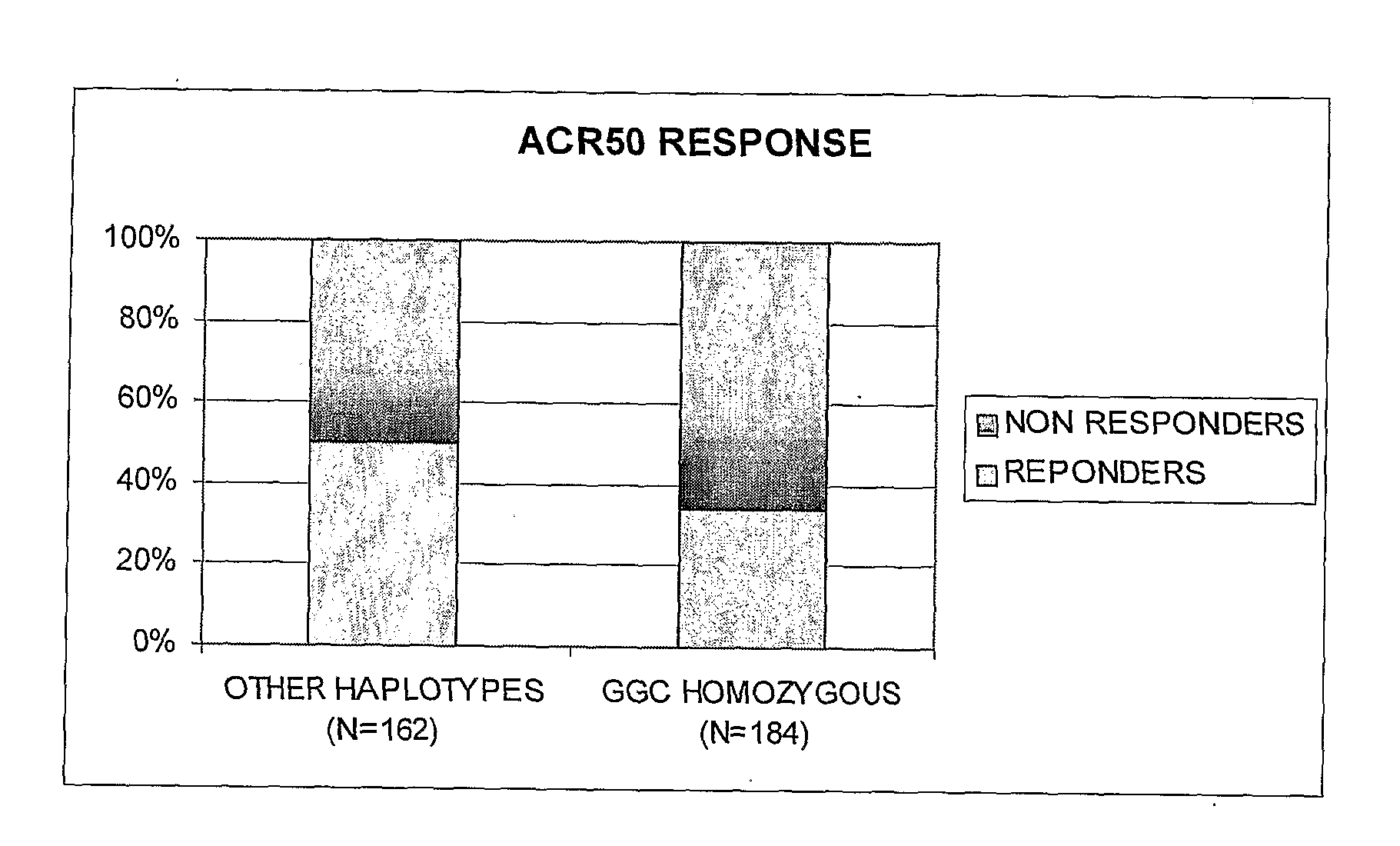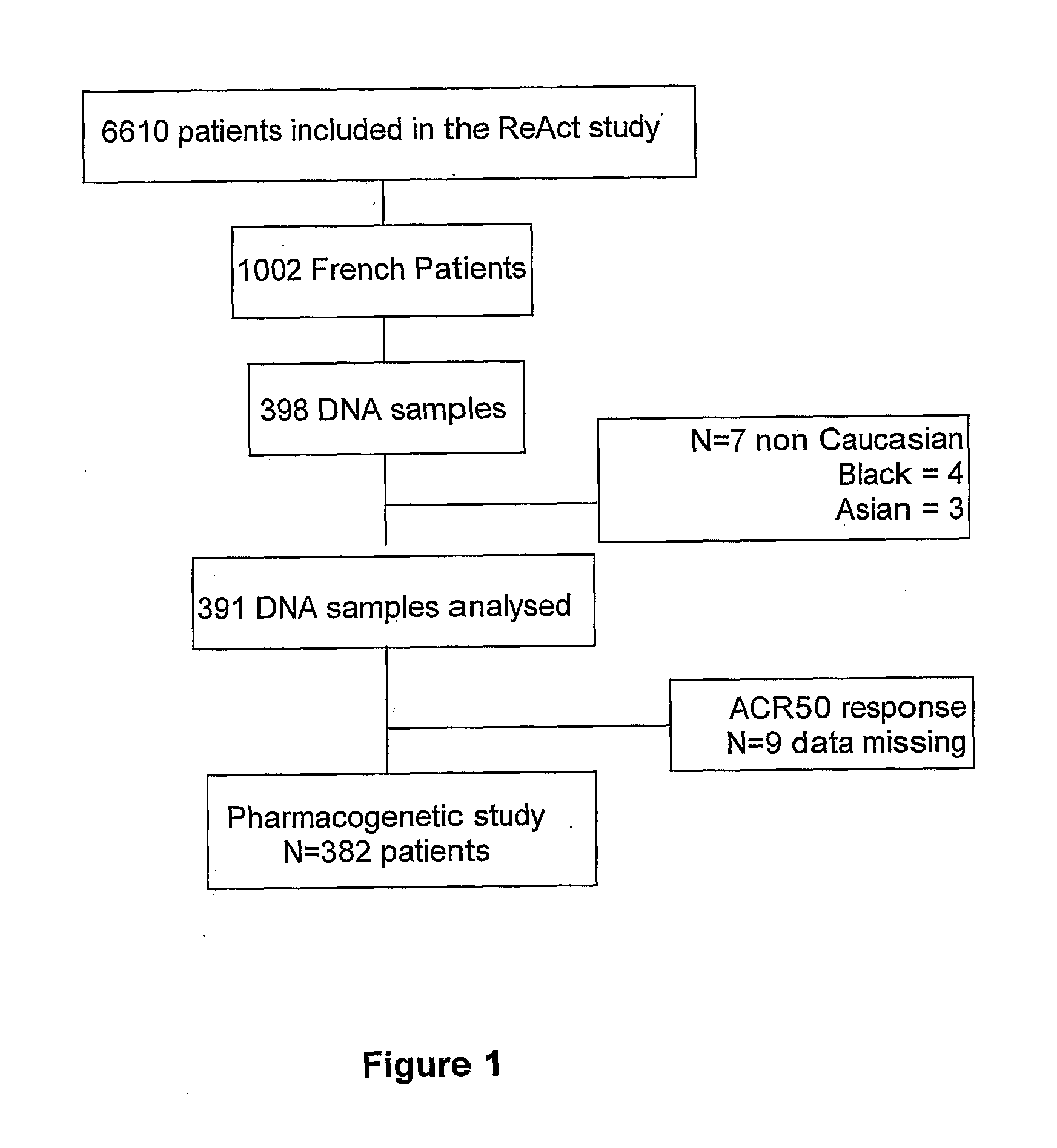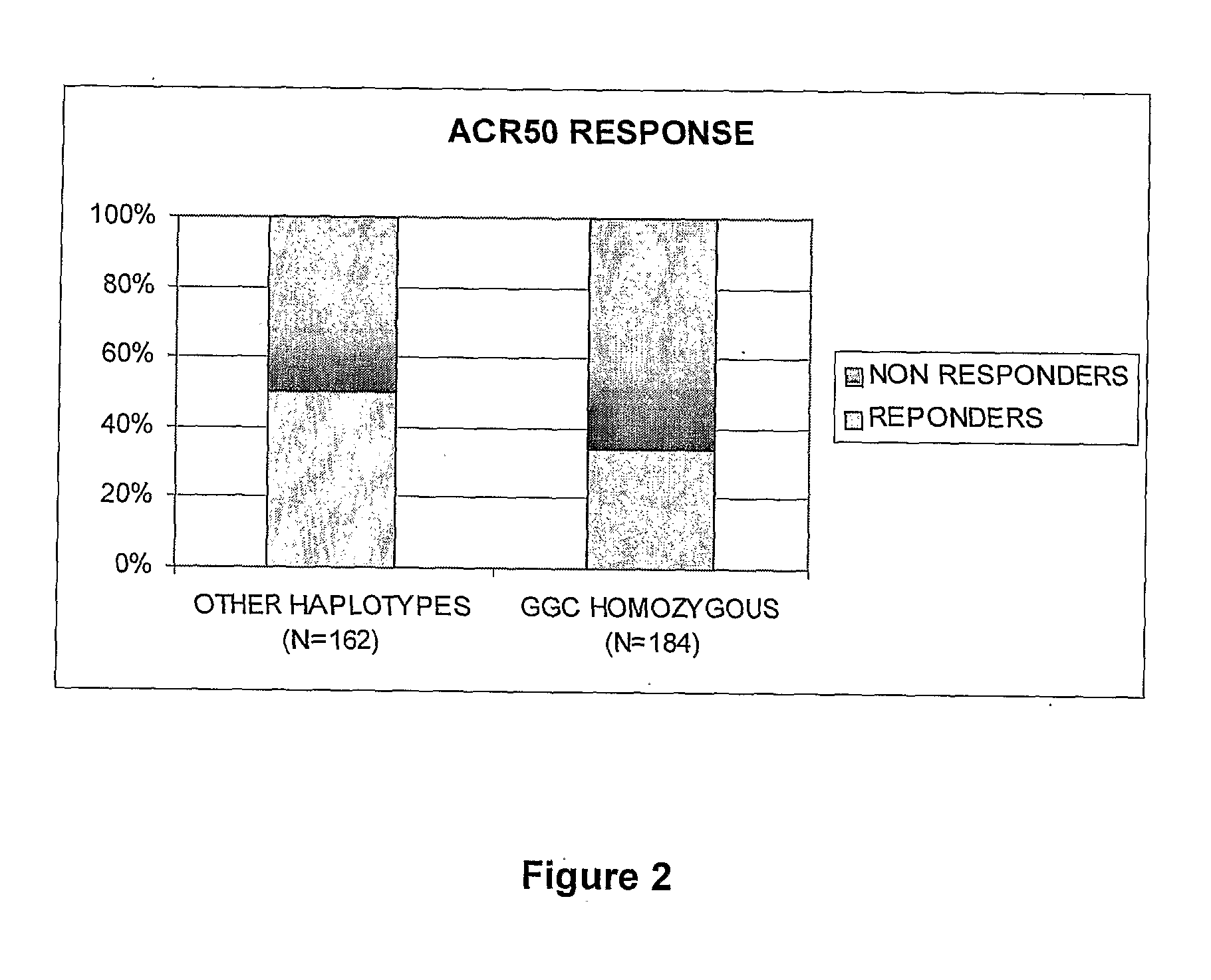Method for predicting therapeutic responsiveness to tnf-alpha blocking agents
a technology of tnfalpha blocker and therapeutic response, which is applied in the field of predicting the response to a treatment with tnfalpha blocker, can solve the problems of high cost, tbas may have side effects, and the efficacy of any given tba in a given patient is unpredictabl
- Summary
- Abstract
- Description
- Claims
- Application Information
AI Technical Summary
Benefits of technology
Problems solved by technology
Method used
Image
Examples
example
Methods
[0071]Patients: This pharmacogenetic study was ancillary from the ReAct (Research in Active Rheumatoid Arthritis) protocol performed at varied sites in Europe and Australia. In the parent ReAct study, 6610 patients were included to assess the safety and effectiveness of adalimumab (ADA), a fully human IgG1 anti-TNF monoclonal antibody. The objectives of the ReAct study were to evaluate efficacy and tolerance of ADA in combination with a variety of disease modifying anti-rheumatic drugs (DMARDs), including patients previously treated with etanercept or infliximab. Briefly, patients enrolled in the ReAct study were men and women years of age with active, adult-onset RA in accordance with the 1987 revised criteria of the American College of Rheumatology (ACR) (Arnett et al. 1988). Inclusion criteria required a disease duration of ≧3 months; a Disease Activity Score based on erythrocyte sedimentation rate and an evaluation of 28 joints (DAS28) (13) of indicating at least moderate...
PUM
| Property | Measurement | Unit |
|---|---|---|
| Fraction | aaaaa | aaaaa |
| Fraction | aaaaa | aaaaa |
| Fraction | aaaaa | aaaaa |
Abstract
Description
Claims
Application Information
 Login to View More
Login to View More - R&D
- Intellectual Property
- Life Sciences
- Materials
- Tech Scout
- Unparalleled Data Quality
- Higher Quality Content
- 60% Fewer Hallucinations
Browse by: Latest US Patents, China's latest patents, Technical Efficacy Thesaurus, Application Domain, Technology Topic, Popular Technical Reports.
© 2025 PatSnap. All rights reserved.Legal|Privacy policy|Modern Slavery Act Transparency Statement|Sitemap|About US| Contact US: help@patsnap.com



